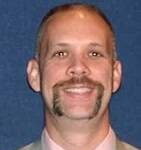By John Foster
Guest Columnist
In 1992, “The Boss”, Bruce Springsteen, released “57 Channels (And Nothin’ On)”.
This was before everybody had a big screen TV, when cable television was booming.
To refresh your memory, Springsteen tells a story about buying a new place in LA and his lady friend wanted a big home entertainment center.
They get connected and spend the night watching TV and soon discover they had 57 channels with nothing on.
She eventually leaves him.
He buys a .44 Magnum and destroys the TV with a couple of well-placed slugs and he gets arrested for disturbing the peace.
When the judge asks him for his defense, he replies, “57 channels and nothin’ on”.
Today, the only thing that’s really changed is a lot more channels and a lot more “nothin’ on”.
In 1961, the new chairman of the Federal Communications Commission, Newton Minnow, testified before a Senate subcommittee hearing.
While advocating for more programming “in the public interest”, Minnow referred to American commercial TV as a “vast wasteland”.
What would Minnow say today?
Hey! It’s not all bad.
I have a fondness for historical specials.
I’ve recently viewed several on the War of 1812, the Apollo space mission and The Civil War, World War I and World War II.
I think most of them bore my wife to distraction, and that’s why we have two TV sets.
Short of sporting events, there’s very little live TV that I watch anymore.
Earlier this month was the 70th anniversary of the “Today” show.
I remember sitting cross-legged on the floor in front of the old black and white TV, watching host Dave Garroway, newsman Frank Blair and Jack Lescoulie every weekday morning before I went to school.
The show even included chimpanzee, J. Fred Muggs (who annoyed Garroway!) and the chimp’s “girlfriend”, Phoebe B. Beebe. You gotta love that name!
Every Friday, Blair and Lescoulie used to pick winners in college football games.
They always had something to say regarding Slippery Rock and when William and Mary played, if they lost, they always said the school played more like Mary.
Corny, I know. Perhaps even sexist in today’s world.
I also was inspired by Paul Harvey Aurandt, better known as Paul Harvey.
For more than 50 years, he ruled the airways with his morning and midday “Paul Harvey News and Commentary” broadcasts.
The man had incredible timing and phrasing.
“Page Two” and “Page Three” and “Here’s a strange” were “earmarks” that I grew to love. Signing off with “Paul Harvey … Good Day!” meant we knew all we really needed to know.
Then, in 1976, he looked behind the scenes with “The Rest of the Story”.
“And now … you know … the rest … of … the … story”.
I think much of that material would still fly on the air today. It was broadcast journalism at its best.
Today, many folks express concern that “the media” is terribly biased. The fact is, “media bias” is nothing new.
“Back in the day”, the nation’s print media went out of its way to “hide” the fact that President Franklin D. Roosevelt had polio.
“We” didn’t think it was good for our nation to see its leader anything less than strong and vigorous, especially during World War II.
Imagine that happening today.
But some might suggest it actually is taking place.
Presidential “affairs” were always “hush-hushed” for the most part.
The Vietnam War and Watergate changed all that.
“The government” was not to be trusted.
But today, the national media wants us to believe some of it.
One of the most media relationship-changing events occurred in 1953.
It was the height of Wisconsin Sen. Joseph McCarthy’s attack on communism.
“McCarthyism” highlighted what many referred to as a “communist witch hunt.”
Enter Edward Roscoe Murrow.
Murrow, born Egbert Roscoe, was the host of the CBS show “See It Now”.
Murrow fell in the crosshairs of “the red scare” when he did a story on Lieutenant Milo Radulovich, a US Air Force officer who was discharged after family members were exposed as “commies”.
The story got the attention of McCarthy, who condemned Murrow and CBS as being “sympathetic to communism”.
Murrow was “warned” to tread carefully and remain balanced in his reporting.
There were obvious commercial implications for CBS and some businesses with big bucks were leaning on Murrow because of the McCarthy frenzy.
To the credit of CBS president William S. Paley, he never pulled the plug on Murrow and the “See it Now” show.
The chain-smoking Murrow (he puffed 60-65 Camels daily!) and his reporting eventually led to the Senate censuring Joseph McCarthy and putting an end to the “red scare”.
The 2005 movie, “Good Night and Good Luck”, directed by George Clooney with David Strathairn as Murrow, is a pretty good show to watch.
It’s enhanced with the black-and-white format and actual newsreel footage of Senator McCarthy.
I think that era changed forever the media’s relationship with the government, which makes today’s scenario a little “out of character” for the networks.
Being a “student” of the media, I often catch my self wondering how the likes of Edward R. Murrow, Paul Harvey, Walter Cronkite and others would report on our world today.
We have so many media options, but there’s no one of that stature reporting today.
The only thing I can safely say is today, “There a lot more than 57 channels with nothin’ on.”
Too bad.





